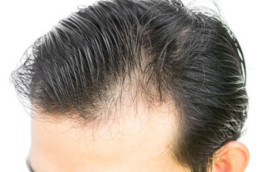How Light Can Cure Baldness
Affecting almost 50% of males, androgenetic alopecia (AGA), is the most common form of baldness. It occurs due to genetic factors, like high levels of testosterone. There are just three treatment options, two forms of drugs and a hair transplant, but these aren’t always effective against AGA. That is where LLLT comes in. Different laser and light type have been tried and found successful as treatments. The FDA even approved one in 2007 for men, the Hairmax Lasercomb®, and went on to okay it for women in 2011.
Although it is not completely clear how the light stimulates hair growth, scientists have postulated that LLLT affects the mitochondria in cells, which may alter the metabolism and other cell processes. This has also proven effective in treating other types of hair loss, like kinds caused by autoimmune disorders or chemotherapy.
So far, most studies on LLLT and hair growth have focused on lights with wavelengths ranging from 635 to 650 nm. They’ve found that just using the laser for a few minutes each day can stimulate hair growth. Others like the near-infrared wavelengths 810 nm, could prove to be even more effective, thanks the ability to penetrate deeper into tissue, but further studies are required.
Any scientists or doctors hoping to study or perform treatment need to ensure that their lights are emitting wavelengths at the correct nanometer. Konica Minolta Sensing can help. Our light measurement instruments, like the CS-3000 Spectroradiometer or the CL-500A Illuminance Spectrophotometer, can measure from 360 to 780 nm. Contact us today and see how our products can help with LLLT.










